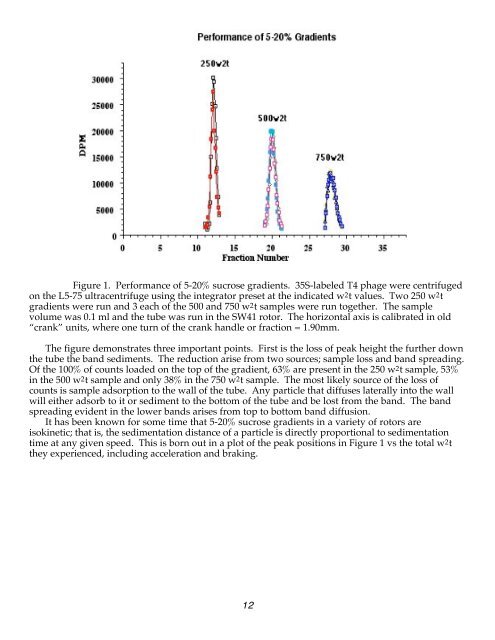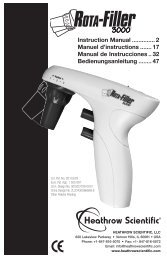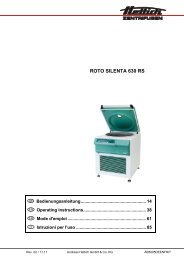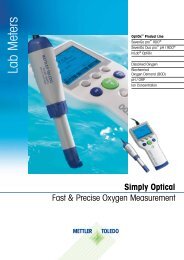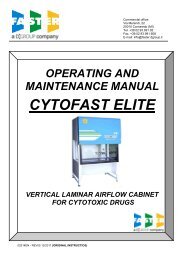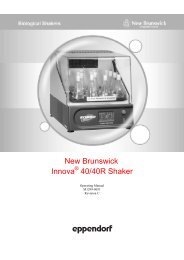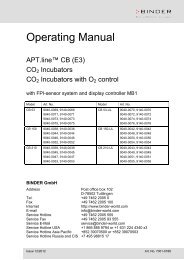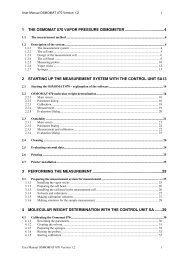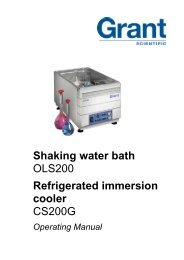Gradient Master - Wolf Laboratories
Gradient Master - Wolf Laboratories
Gradient Master - Wolf Laboratories
You also want an ePaper? Increase the reach of your titles
YUMPU automatically turns print PDFs into web optimized ePapers that Google loves.
Figure 1. Performance of 5-20% sucrose gradients. 35S-labeled T4 phage were centrifuged<br />
on the L5-75 ultracentrifuge using the integrator preset at the indicated w2t values. Two 250 w2t<br />
gradients were run and 3 each of the 500 and 750 w2t samples were run together. The sample<br />
volume was 0.1 ml and the tube was run in the SW41 rotor. The horizontal axis is calibrated in old<br />
“crank” units, where one turn of the crank handle or fraction = 1.90mm.<br />
The figure demonstrates three important points. First is the loss of peak height the further down<br />
the tube the band sediments. The reduction arise from two sources; sample loss and band spreading.<br />
Of the 100% of counts loaded on the top of the gradient, 63% are present in the 250 w2t sample, 53%<br />
in the 500 w2t sample and only 38% in the 750 w2t sample. The most likely source of the loss of<br />
counts is sample adsorption to the wall of the tube. Any particle that diffuses laterally into the wall<br />
will either adsorb to it or sediment to the bottom of the tube and be lost from the band. The band<br />
spreading evident in the lower bands arises from top to bottom band diffusion.<br />
It has been known for some time that 5-20% sucrose gradients in a variety of rotors are<br />
isokinetic; that is, the sedimentation distance of a particle is directly proportional to sedimentation<br />
time at any given speed. This is born out in a plot of the peak positions in Figure 1 vs the total w2t<br />
they experienced, including acceleration and braking.<br />
12


